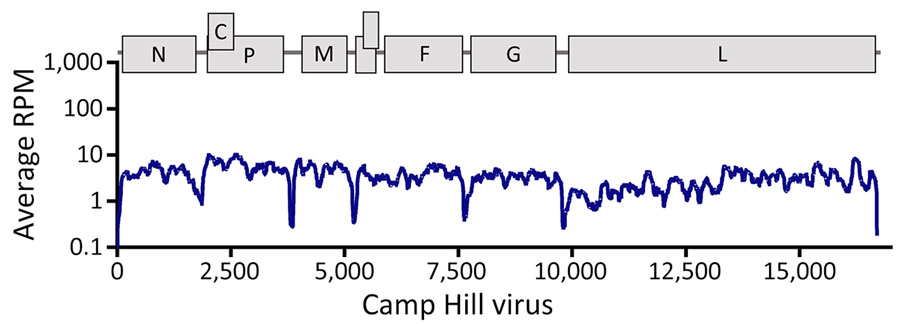Volume 31, Number 2—February 2025
Research Letter
Henipavirus in Northern Short-Tailed Shrew, Alabama, USA
Figure 1

Figure 1. Genome organization and coverage of Camp Hill virus identified in Blarina brevicauda shrews from Alabama, USA. Coverage shows subgenomic expression (in RPM) of henipavirus genes (shown across top). RPM, reads per million.
Page created: December 30, 2024
Page updated: January 31, 2025
Page reviewed: January 31, 2025
The conclusions, findings, and opinions expressed by authors contributing to this journal do not necessarily reflect the official position of the U.S. Department of Health and Human Services, the Public Health Service, the Centers for Disease Control and Prevention, or the authors' affiliated institutions. Use of trade names is for identification only and does not imply endorsement by any of the groups named above.